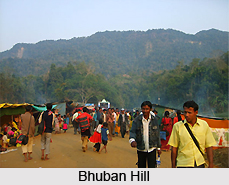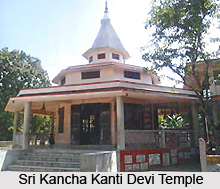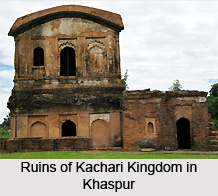 The manin transport hub of South Assam and the headquarters of Cachhar district is Silchar, is inhabited mostly by the Bengalis. At Silchar, the Barak River flows by the extreme east of the town. The sunrise amid charming nature from Surma valley in Silchar is incomparable. The first rays of the sun rising from behind the hill changes its colours every moment in the river waters. A group of Tibetan traders run a small wool market on Central Road during the winter months which is worth a visit for its clothing, carpets and friendly atmosphere.
The manin transport hub of South Assam and the headquarters of Cachhar district is Silchar, is inhabited mostly by the Bengalis. At Silchar, the Barak River flows by the extreme east of the town. The sunrise amid charming nature from Surma valley in Silchar is incomparable. The first rays of the sun rising from behind the hill changes its colours every moment in the river waters. A group of Tibetan traders run a small wool market on Central Road during the winter months which is worth a visit for its clothing, carpets and friendly atmosphere.
Bhuban Hill
50-km away is Bhuban hill, on which is situated the Bhubaneswar temple. The god & goddess are `Hara-Parvati`. From Silchar it is 37-km away in Bhuban Nagar and one can reach over here by bus and cover the rest of the distance walking along the hill track.
Sri Sri Kancha Kanti Devi Temple
From Silchar, 17-km away on the way to airport, at Udharband is situated the famous temple of Sri Sri Kancha Kanti Devi. The Goddess is widely known as very potent and that she is a union of Goddess Kali and Goddess Durga. Being commanded in the dream, the king established this four-armed gold image of the image of the Goddess in 1806. There are various legends centering around the Goddess. The old temple is no more present on the site instead a new one had been built up. Fulfillment of one`s desire is assured under the dream-commanded tree at the Ashram of Brajamohan Goswami, 2-km further ahead. Devouts may have their prasad at noon. That too is a legendary one.
Khaspur
 3-km away is Khaspur on the left from Brajamohan Goswami Ashram. It was the capital of the kings of Cachhar in 1690. The ruins of the capital are of great importance and a visiting spot for tourists. The original palace is in a state of non-existent, but its subsidiaries, the main entrance gate, the `Suryadwar`; `Debalaya` are still there intact. The entrances are of elephant-patterns. Take a city bus and get down at Salganga or visit by taxi / auto.
3-km away is Khaspur on the left from Brajamohan Goswami Ashram. It was the capital of the kings of Cachhar in 1690. The ruins of the capital are of great importance and a visiting spot for tourists. The original palace is in a state of non-existent, but its subsidiaries, the main entrance gate, the `Suryadwar`; `Debalaya` are still there intact. The entrances are of elephant-patterns. Take a city bus and get down at Salganga or visit by taxi / auto.
Maniharan Tunnel
5-km north of the Bhubaneswar temple is Maniharan tunnel and it is believed that God Sri Krishna used to use this tunnel. Holy Tribeni River flows down the tunnel. There is also a temple complex over here and Lord Rama, Lakshmana, Garurha, and Hanuman are being worshiped in those temples. Festivals are held over here on the eve of Dol Purnima (full moon night of Doljatra), Baruni and Shivaratri.
Other Attractions
Some other attractions include: the newly developed medical college; 11 martyr`s tombs at Gandhi Bag on the bank of the lake, who dedicated their lives on the eve of language movement in 1964, 11 monumental pillars are erected there for the 11 martyrs. A little further are Harisava and the temple of Goddess Lakshmi Devi.
Getting There
By Air
 Silchar`s airport, 13-km away, can be reached by shared taxi from outside the Indian Airlines office in club road. One can catch regular flights of Indian Airlines to Calcutta and Imphal from here.
Silchar`s airport, 13-km away, can be reached by shared taxi from outside the Indian Airlines office in club road. One can catch regular flights of Indian Airlines to Calcutta and Imphal from here.
By Rail
The railway station is situated 3-km out of town in Tarapur, with regular trains to Haflong and Lumding, where one can catch a connected train for Guwahati.
By Road
The state bus stand, near Devdoot cinema, where the Central Road and Club Road meet the Circuit House Road, is the terminus for Assam, Meghalaya and Tripura State Bus Services.



















